Advertisement
As the T missed safety investigation deadlines, state regulators failed to act
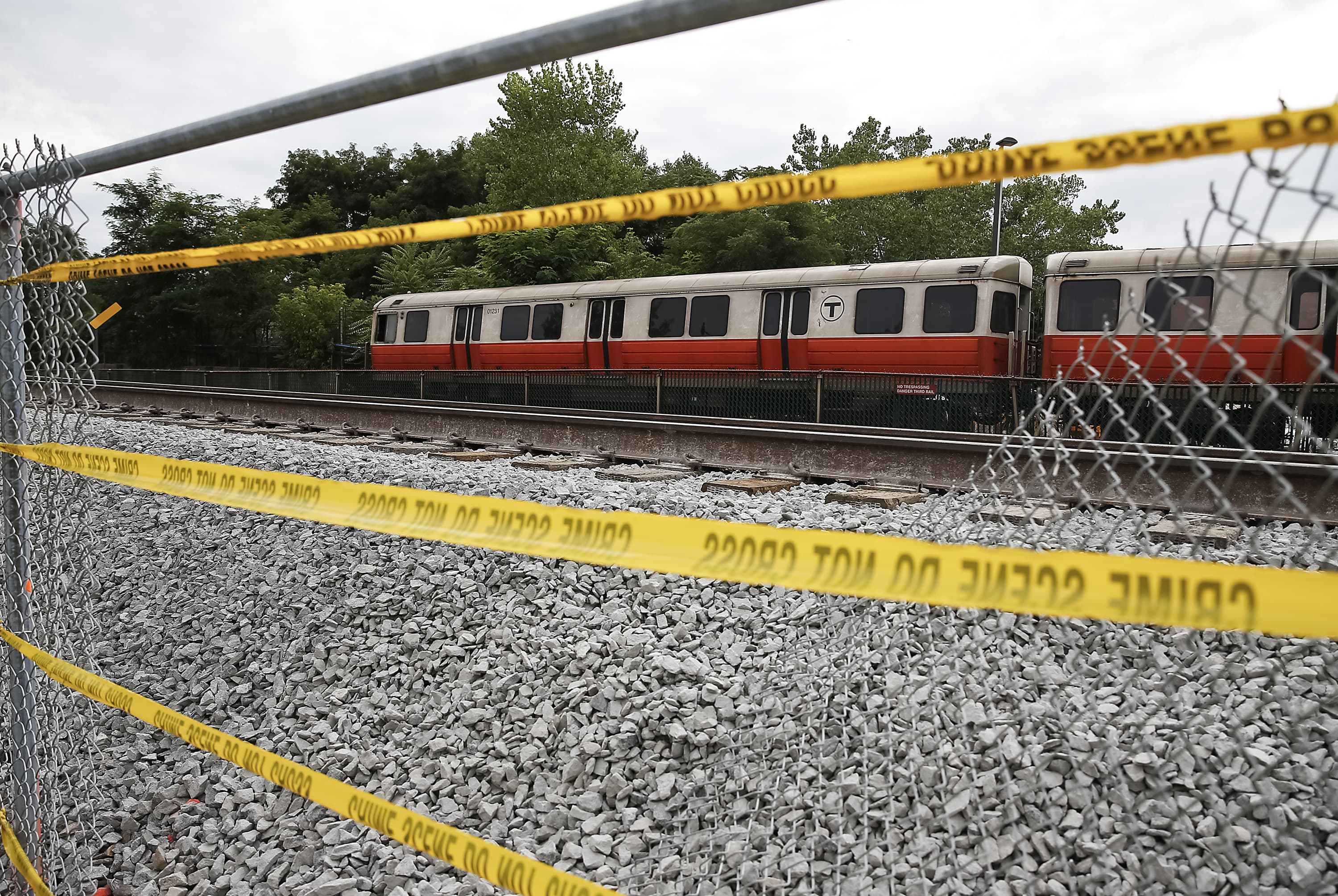
When it comes to transit safety, there’s mounting evidence that the MBTA’s overseers at the Department of Public Utilities have been dangerously distant as problems have piled up: For accidents, collisions or near misses, they rely on the T to investigate itself.
The state utility regulators have admitted they lack the expertise to conduct investigations of the public subway system. But they’ve also neglected their responsibility to perform timely, independent reviews of the T’s investigations, according to public records reviewed by WBUR and interviews with current and former transit officials.
The DPU has continually allowed the T to miss required 60-day deadlines for submitting investigative reports, including probes of crashes, runaway trains and injuries, public records show. The delays have caused the DPU to postpone its own reviews of the rail incidents and in some cases prolonged plans for corrective action to shore up safety for riders and workers.
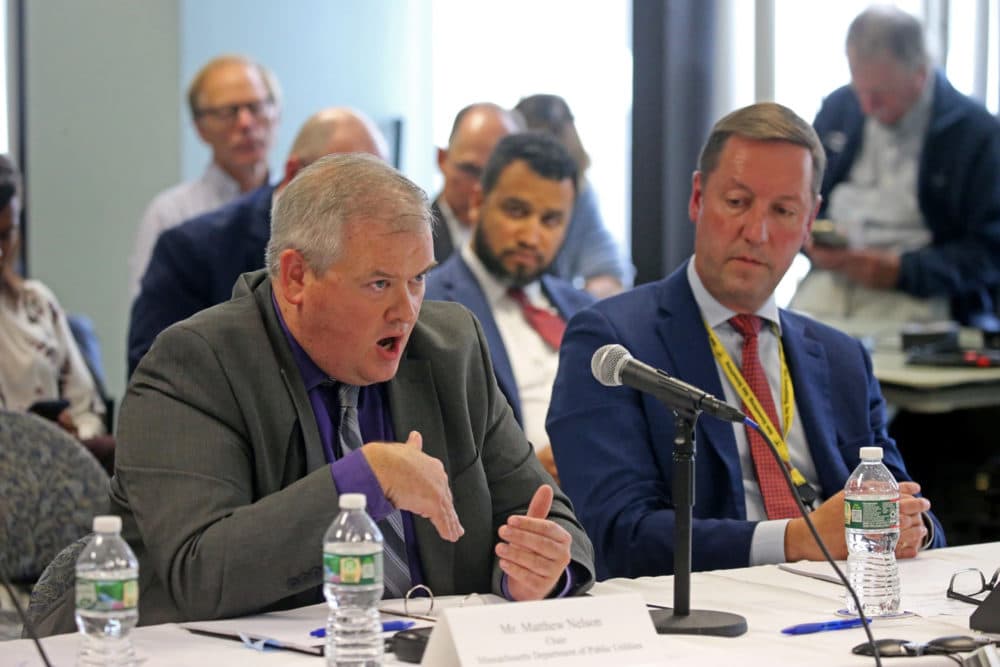
The picture that emerges of the DPU is one of an agency that has failed to exercise its enforcement authority, contributing to what federal regulators have called a lax safety culture at the T, even as the number of serious problems climbed.
“Timeliness is absolutely essential,” said Joseph Aiello, who was chair of the T’s Fiscal and Management Control Board from 2015 to 2021. “If you're not getting the data — you're not getting the data in a fulsome way and on time — and you don't have a regulator who is proactively pushing back, that further puts an organization like the T in safety jeopardy.”
Aiello said timely reports are key to spotting patterns in safety problems, in order to head off similar future events, and potentially more severe accidents.
Out of 129 rail-related investigations from 2021 through last October, 80% were filed late by the T, DPU records show. Dozens were months late.
Many incidents were serious: An Orange Line battery explosion in a rail yard. A Green Line collision with a person. A runaway Red Line train.
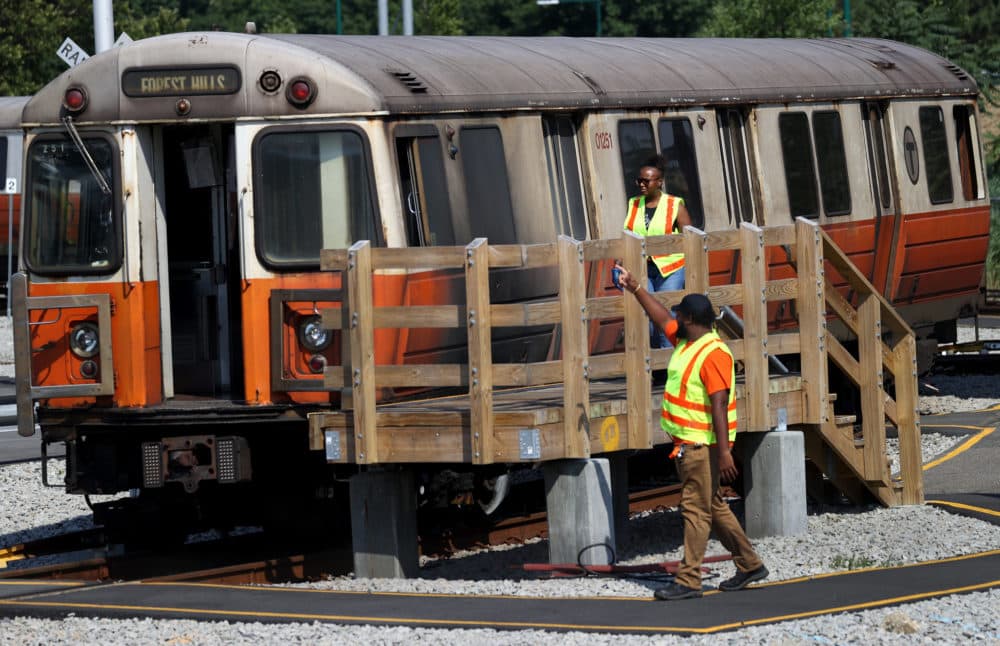
In these and dozens of other incidents, the DPU failed to hold the T accountable for submitting reports on time and for following through promptly on safety measures, according to public records and federal officials. The DPU routinely grants the T multiple extensions for filing these reports.
Joseph DeLorenzo, chief safety officer at the Federal Transit Administration, who oversaw the agency’s probe of the T and the DPU over the summer, said the DPU has to do better.
“In their role as regulator, they need to make sure that they get the reports and they get them on time and they're not continually extending those things,” he said in an interview with WBUR. “That was a problem that we noted early on.”
DPU officials, including chair Matthew Nelson, declined requests for interviews. In statements provided by a spokeswoman, the agency said it oversaw 104 MBTA investigations in 2022.
Advertisement
An MBTA spokesman said reports have been late due to a shortage of employees at the transit system and, more recently, because the DPU has been asking for increased documentation on incidents.
Records show that DPU field staff do typically arrive at the scene of incidents shortly after they happen, as required, to observe T workers investigating the scene. If an MBTA probe is found to fall short, the DPU spokeswoman said, the regulator would take over, but that hasn’t happened since at least 2019.
As an agency, the DPU spends most of its time and resources on matters related to gas, electricity and water. In addition, it regulates the safety of bus operators, movers, towing businesses and ride-hailing companies like Uber. But it is also the state-assigned overseer of the T, answerable to the Federal Transit Administration.
“You're not there to be in bed with each other. You're there to be independent of each other.”
Carmen Bianco
A report by state lawmakers last week concluded that if the DPU can't be more proactive and independent, the T safety oversight role should move to another agency, or to a brand new one.
It’s a dilemma that will soon land on the desk of Gov. Maura Healey as well. At her inauguration, she pledged to hire a transportation safety chief within 60 days to conduct an audit of the T. A Healey spokeswoman said the governor will have that person “review the Department of Public Utilities’ role in MBTA safety oversight.”
Mounting crisis ignored
The laissez-faire approach of the DPU is not new. The T’s shortcomings burst into plain view eight years ago, when heavy winter storms in 2015 halted a transit system unprepared to clear snow from its tracks. That summer, then-Gov. Charlie Baker established the Fiscal and Management Control Board, to “help get the T back on track.” But the problems kept coming. Later that year, the city watched as a runaway Red Line train made its way out of Braintree with passengers on board and no conductor at the helm.
Through it all, the DPU has stayed largely under the radar. Even some people who work on transit policy had been unaware of its oversight role. Aiello, who was chair of the fiscal control board, said in the course of his tenure, the panel never heard from the utility agency. In retrospect, he said, “I did find that pretty surprising.”
The T’s fiscal control board commissioned a group of outside transit experts in 2019 to conduct a safety review. The panel's report criticized the T’s internal investigation abilities, and also found that the DPU allowed such quick approval of corrective actions that panel members were “not confident" post-accident fixes would be fully analyzed and checked.
Carmen Bianco, a member of that safety review panel and a former head of the New York City transit system, said it’s not unusual that the safety department within the T would take charge of an investigation. But the oversight agency should do an independent analysis, he said, particularly after serious incidents.
Bottom line, Bianco said, “You're not there to be in bed with each other. You're there to be independent of each other.”
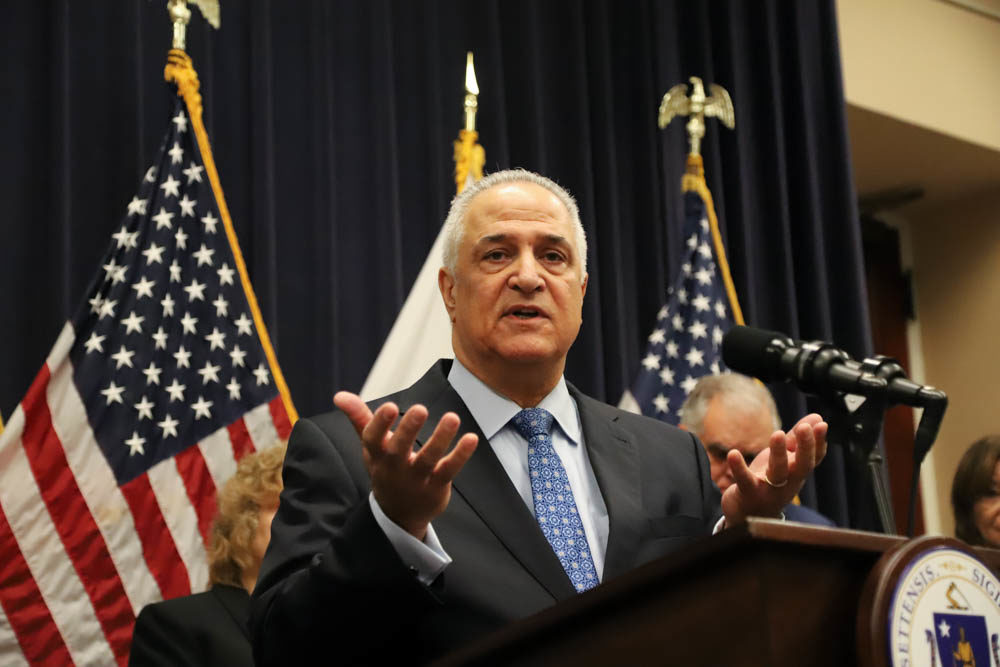
He said the extent of DPU’s delegation of responsibility to the T is not typical of other major rail systems. Nationally, he said, “Most of the oversight agencies bring on folks that have the expertise to go out in the field and independently look at what's going on,” and develop findings and recommendations.
Bianco said if the T had addressed the 30-plus recommendations in his group’s safety review, “That would have brought you up to speed with every other [rail] property in America.” He said he was shocked to learn in the FTA’s August report that little had changed with regard to safety at the T since 2019.
Also in 2019, MBTA whistleblower Ron Nickle alleged in a complaint to the FTA that cozy relationships between DPU and T officials undermined accident investigations. Nickle, the T’s chief safety officer for seven years, alleged that officials of both agencies pressured him to downplay safety problems and omit findings from accident investigation reports.
Nickle was fired by the MBTA, a move he alleged was in retaliation for speaking out. He said he reached a financial settlement with the transit system but did not disclose the amount.
By the end of 2020, the FTA released its audit of the DPU, which it conducts every three years. It found 16 areas where the DPU was “noncompliant” with the oversight program. Notably, the federal agency said the DPU “did not verify the sufficiency and thoroughness of MBTA accident investigation reports.” In other cases, they didn't conduct independent reviews of the MBTA's findings on the root causes of safety incidents.
In one instance cited by the FTA, after an MBTA Green Line trolley derailed near Blandford Street Station — not far from Kenmore Square — the T’s investigation failed to answer essential questions, like precisely why the train had gone off the tracks. Yet the DPU failed to push for more information, the FTA said in its audit.
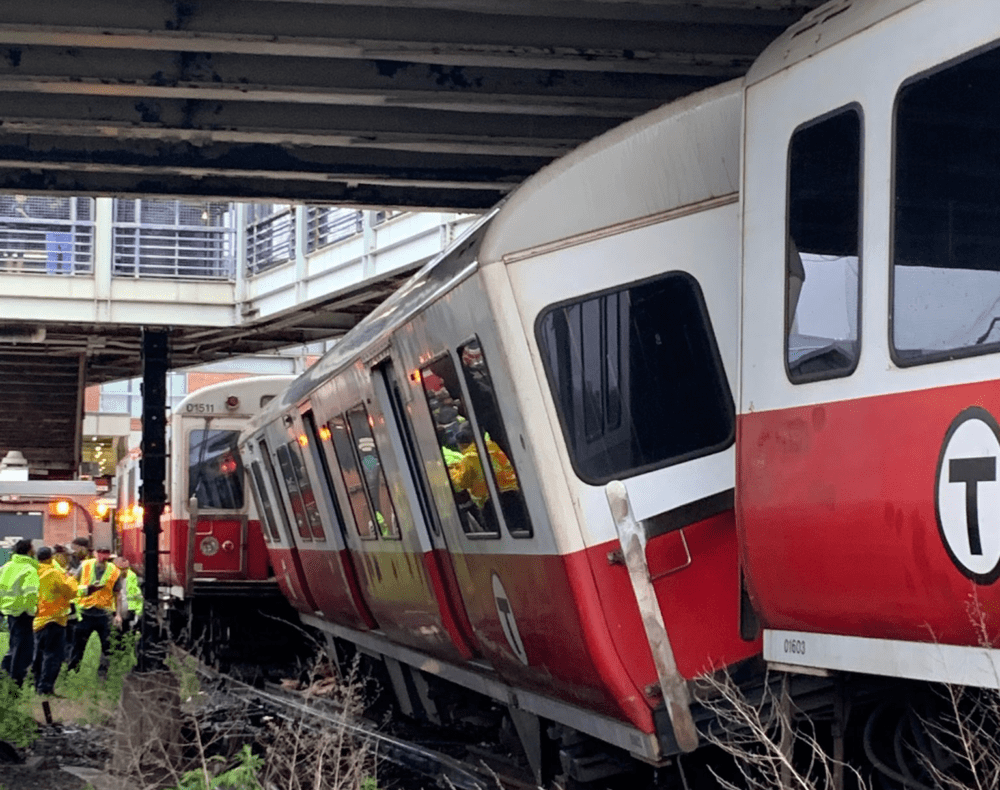
In another example, the T had reported a “serious hazardous condition” of speeding on the Green Line. The DPU recommended corrective actions, from posting speed signs to improving driver training. But it failed to require the T to submit an implementation plan – and the changes didn’t happen, the FTA said.
In June of 2019, a Green Line train traveling at more than triple the 6 mile-per-hour speed limit derailed, resulting in 10 injuries, the federal report said. And speeding on the Green Line has remained a problem.
Despite the feds' findings that the DPU lacks follow-through on serious incidents, the regulator's spokeswoman in a statement said the agency observes T investigations “from beginning to end," to ensure they are thorough in finding root causes and contributing factors.
The federal agency ordered the DPU to submit a plan for approving corrective actions at the T and making sure they are implemented. The DPU said it has done that, along with addressing other FTA findings. But federal officials won’t approve or reject the DPU’s suggested fixes until it tackles other urgent safety problems identified in last summer’s safety probe.
DeLorenzo, who took the FTA's top safety job a year ago, said the federal agency had expected the DPU to move more quickly to improve its oversight.
"We would have expected that those things would have been taken care of before we had to get involved," he said.
Big responsibility on a small budget
When the federal government started asking more of state-appointed transit overseers in 2016, the DPU did little to adjust. It had no top officials with transit experience, and that didn’t change when the T’s safety challenges started making regular headlines over the last several years.
“If you dig yourself a big hole, it's a lot harder to get out of."
Joseph DeLorenzo
Of the DPU’s roughly $21 million budget, only 8% is devoted to transportation oversight. Of that, just over $356,000 comes from the state, a sum that has barely budged since 2019. Another $1.4 million is grant funding from the FTA for the transit oversight program.
With so much on DPU's plate, it’s unclear why the transportation oversight budget from the state is so modest. The regulator would not say whether it has sought more state funding over the years.
At a State House hearing in October, DPU officials’ main defense for their shortfalls in oversight amounted to a protracted hiring problem. The regulator’s director of transportation oversight since November 2020, Elizabeth Cellucci, told lawmakers, “Like me, I think everybody — everybody except one person — has been in the rail division less than two years.”
She also said, “Although we have all these open positions posted on an ongoing basis, we don't receive many applications. And of those that we receive, almost no one has rail experience or rail safety experience.”
Cellucci is a lawyer whose last job, according to her LinkedIn profile, was director of energy efficiency at Columbia Gas.
The DPU’s failure to staff up started well before the pandemic, as did the growing number of open jobs at the T.
“If you dig yourself a big hole, it's a lot harder to get out of,” the FTA’s DeLorenzo said.
That’s especially true in the current labor market. The DPU said it’s attending job fairs and posting jobs in more places to try to attract applicants. In September, the DPU said it had 6 safety staffers and as of last month, was still looking to hire five more people, including engineers, compliance officers and an auditor. It also had reallocated three staffers to assist with rail safety oversight and was tapping outside consultants.
Federal regulators in their report last summer said they’ve seen some progress by the DPU, but “remains concerned” that the DPU has not used its existing regulatory and statutory enforcement authority to demand that the T correct safety problems on a timely basis.
Some critics doubt the DPU can ever effectively oversee the T. One of those is Jim Aloisi, a former state secretary of transportation who now teaches urban transportation at MIT.
“I don't think there's anyone who could honestly say the DPU had a level of depth and expertise in subway systems,” Aloisi said, “or any of the intricacies of the T that would enable it to effectively be a state safety oversight agency.”
Laura Kraegel, a Roy W. Howard Investigative Fellow at WBUR, contributed reporting to this story.
This segment aired on January 12, 2023.
